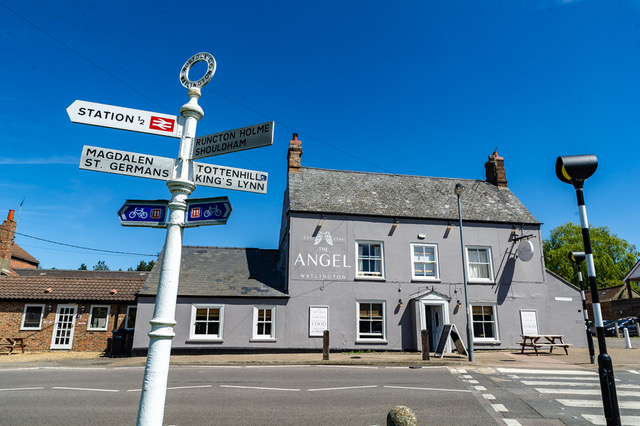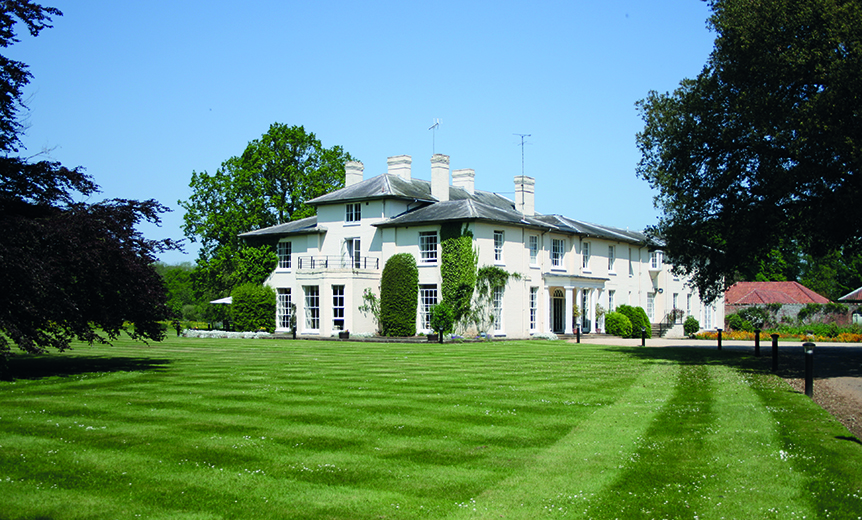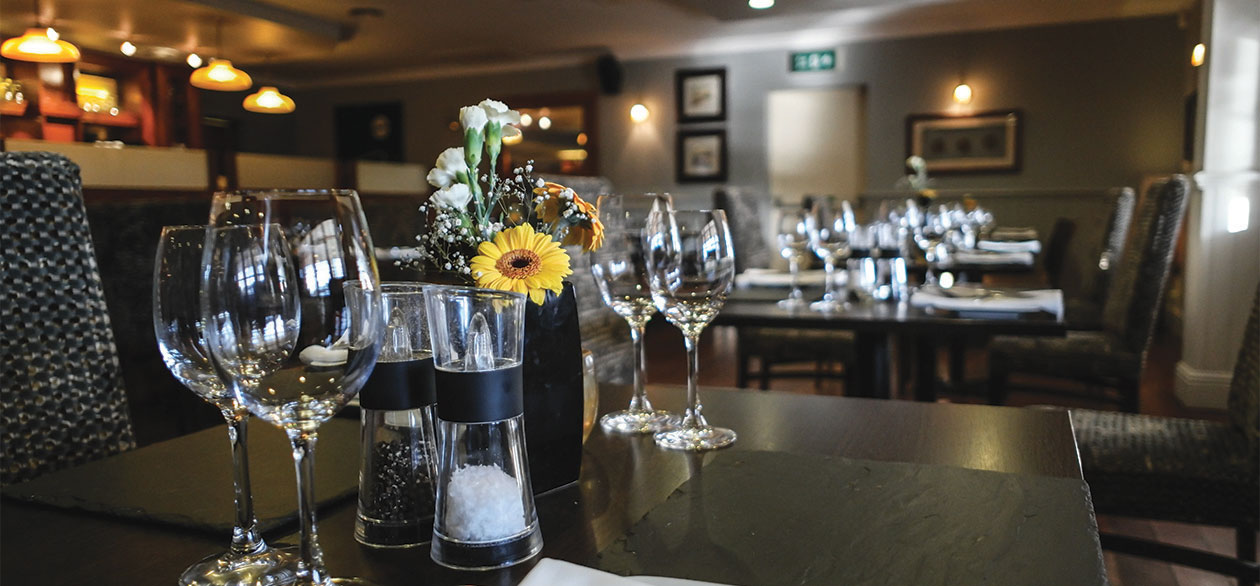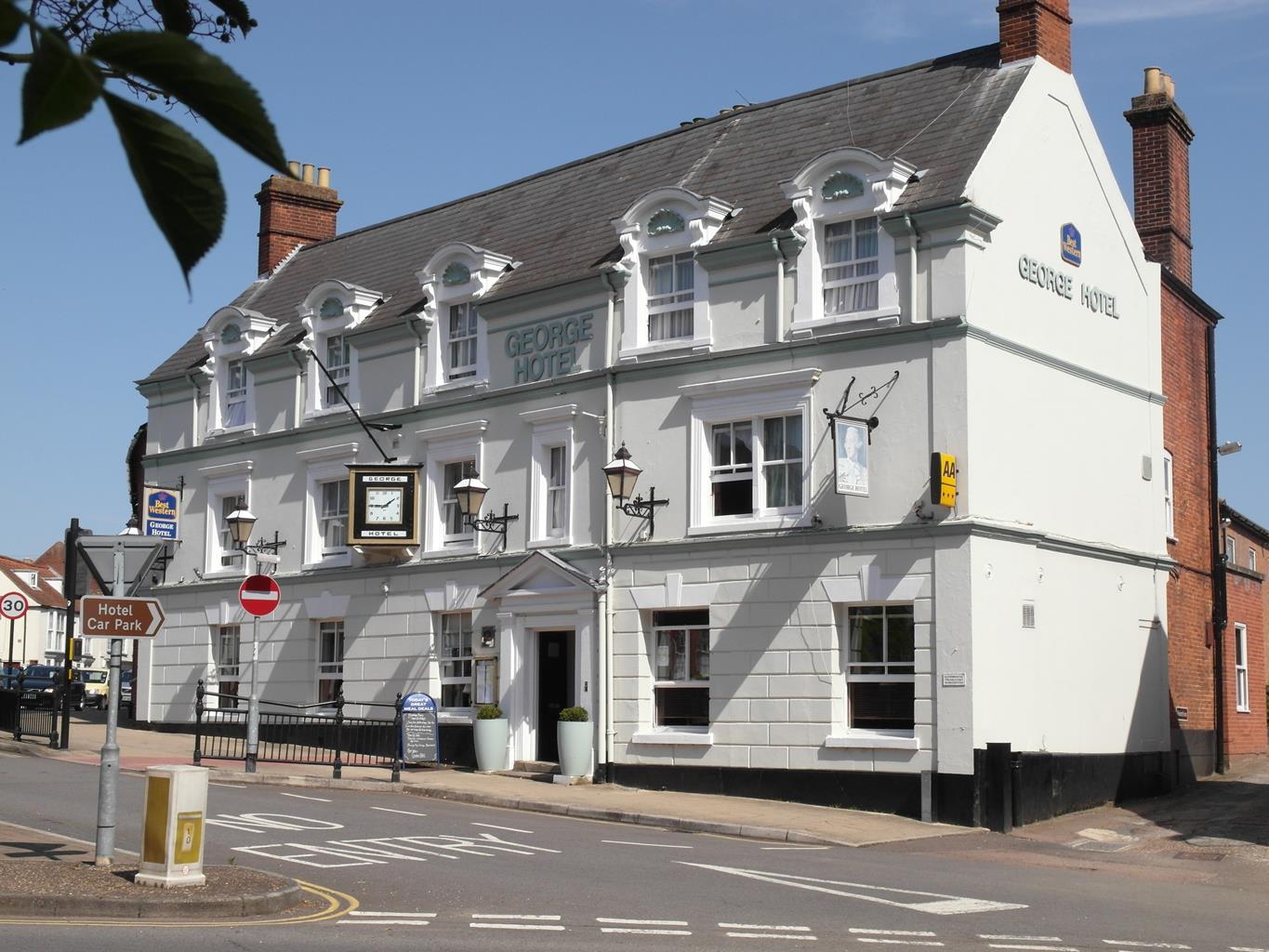Located in the centre of historic Swaffham and originally a coaching inn in the 16th century,…
Around Oxburgh Hall

Lush meadows and peaceful farmland surround one of England's finest country houses.
3.25 miles (5.3kms)
About the walk
Oxburgh Hall is one of Norfolk's greatest treasures. It is a gorgeous cluster of red-brick buildings standing defiantly inside a wide moat. These days the moat contains nothing more threatening than carp and water lilies, but the Bedingfeld family, who have owned the house since the 15th century, had good cause to protect themselves in the past. They have demonstrated loyalty to two causes – the Catholic Church and the English Crown – both of which have led them into considerable danger. The pub in Oxborough village is named after the family.
A priest's hidey-hole
The Bedingfelds' loyalty to their religion stood them in good stead until Tudor times, but was a dangerous position to hold during the Reformation – as the 16th-century Priest Hole attests. When it became illegal to hold Catholic Masses, some wealthy families were reduced to building secret places in their homes, so that their household priest could hide there, occasionally for some considerable time, without being detected. Oxburgh Hall was one such house.
Rise and fall
Before the Dissolution of the Monasteries, the Bedingfelds were a respected and influential family. One member was so trusted by Henry VIII that he was given the divorced Catherine of Aragon to watch over and his son was entrusted with the care of the future Elizabeth I. However, as Protestantism became more firmly rooted, the Bedingfelds fell from favour.
They fell even further during the Civil War when they remained firmly Royalist. Their allegiance to Charles I saw Oxburgh Hall occupied and damaged by Roundheads. They survived until the Restoration, when their fortunes turned again and they began to claw back some of their power and riches.
Among the Hall's finest treasures are its Marian wall hangings. These tapestries were sewn sometime around 1570 by Mary Queen of Scots and the Countess of Shrewsbury, Bess of Hardwick.
Oxburgh Hall has seen many changes since Sir Edmund Bedingfeld applied for a licence to crenellate – to upgrade his manor defensively – in 1482, but, conversely, many things have remained unaltered. Edmund's great gatehouse still dominates the house, and Pugin's restoration in the 1830s was sympathetic to the original style. Between 1835 and 1839 a chapel was built by Sir Henry Richard Paston-Bedingfeld in the grounds of the hall, near the gatehouse. In 1845 the French gardens were laid out. In 1952 it was acquired by the National Trust. Visitors today can enjoy strolls around the kitchen garden and orchard, or follow the woodland walk and nature trail.
Walk directions
Begin by walking up Eastmoor Road, opposite the church. Then, after about 700yds (640m), take the footpath to your right.
The signed path may be partially obscured by crops, but take a diagonal direction north until you reach the end of the second field.
Turn left along a sandy farm track with a line of trees to your right. After about 800yds (732m), the track bends right to meet a road beside a barn.
Turn right, with the earthworks of old St Mary's Church in the field to your left.
After about 600yds (549m), the lane bends sharp right towards Gooderstone and Oxborough. Follow this road to a crossroads. Go straight across, down the road marked 'Weak bridge'.
Look for the footpath marked on your right, which will be before the bridge over the River Gadder, and immediately adjacent to the Anglian Water works. There may be signs warning of a bull in the field, so take care. Alternatively, return to the crossroads and turn left to walk into Oxborough by road. Otherwise cross a stile and walk straight across the meadow ahead, aiming for a prominent hedgerow, until you reach another stile in the far corner of the field. Keep straight ahead with the hedgerow on your left and stay on the path, crossing over a track, until you reach a third stile. Cross the stile and walk between the houses to return to the village green.
Additional information
Footpaths and country lanes
National Trust house and arable farmland
Can run free, but must be under control on farmland
OS Explorer 236 King’s Lynn, Downham Market & Swaffham
On-street parking around village green and car park at Bedingfeld Arms
None on route
WALKING IN SAFETY
Read our tips to look after yourself and the environment when following this walk.
Find out more
Also in the area
About the area
Discover Norfolk
The North Norfolk Coast is designated an Area of Outstanding Natural Beauty and probably the finest of its kind in Europe. Here you’ll find a string of quaint villages and small towns – Holkham, Wells-next-the-Sea and Cley next the Sea are 21st-century favourites, while Sheringham and Cromer are classic examples of a good old-fashioned seaside resort where grand Victorian hotels look out to sea. Further round the coast you'll find Great Yarmouth, one of the most popular resorts in the UK and packed full of amusements, shops and seashore entertainment. And let's not forget Norwich, the region's only city.
Norfolk prides itself on its wealth of historic houses, the most famous being Sandringham, where Her Majesty the Queen and her family spend Christmas. Many of Norfolk’s towns have a particular charm and a strong sense of community. The quiet market towns of Fakenham and Swaffham are prime examples, as well as Thetford, with its popular museum focusing on the TV comedy series Dad’s Army which was filmed in the area.
Nearby stays
Restaurants and Pubs
Nearby experiences
Recommended things to do
Why choose Rated Trips?
Your trusted guide to rated places across the UK
The best coverage
Discover more than 15,000 professionally rated places to stay, eat and visit from across the UK and Ireland.
Quality assured
Choose a place to stay safe in the knowledge that it has been expertly assessed by trained assessors.
Plan your next trip
Search by location or the type of place you're visiting to find your next ideal holiday experience.
Travel inspiration
Read our articles, city guides and recommended things to do for inspiration. We're here to help you explore the UK.













